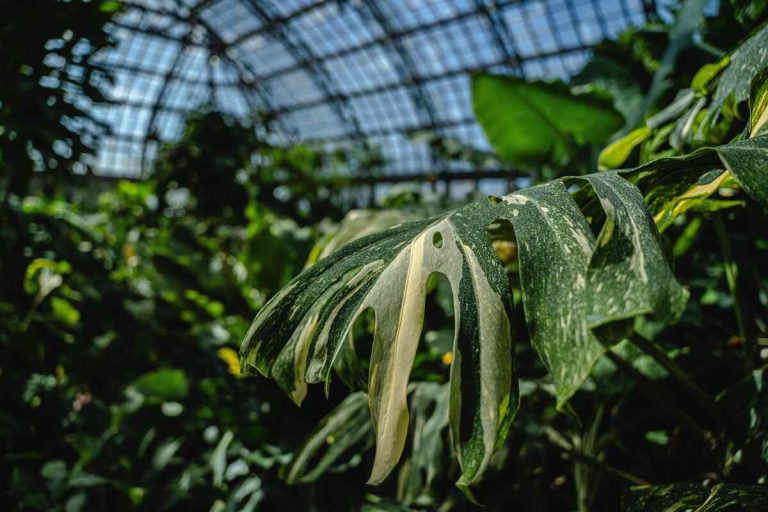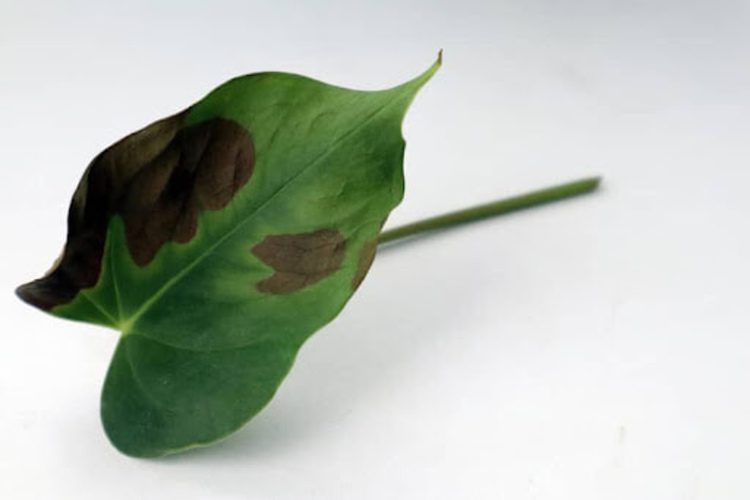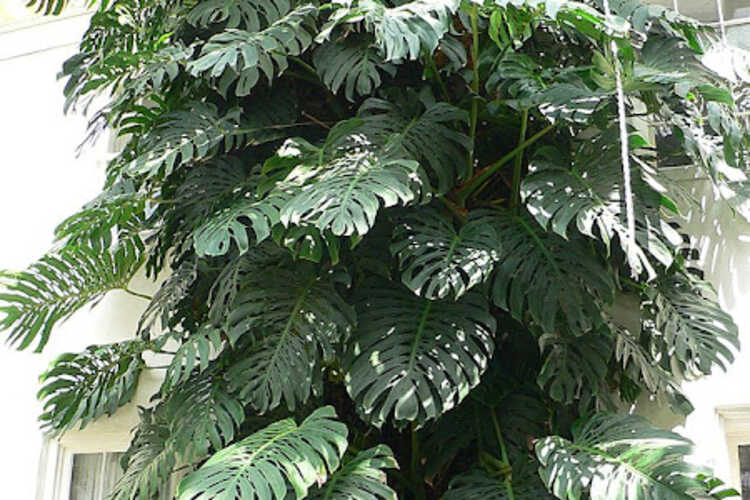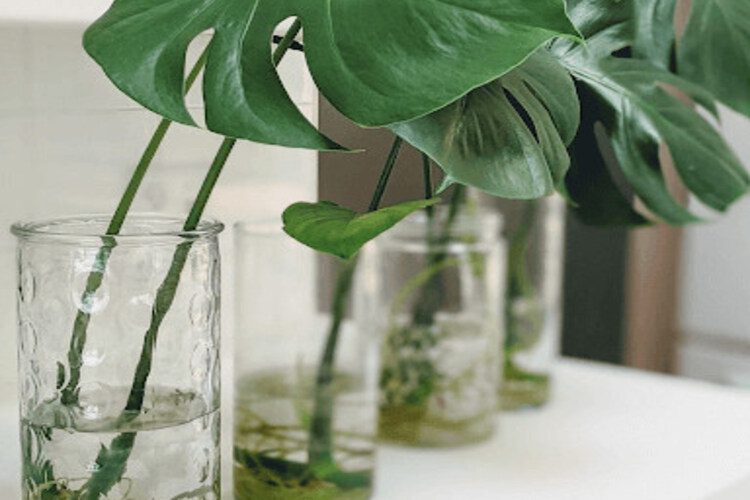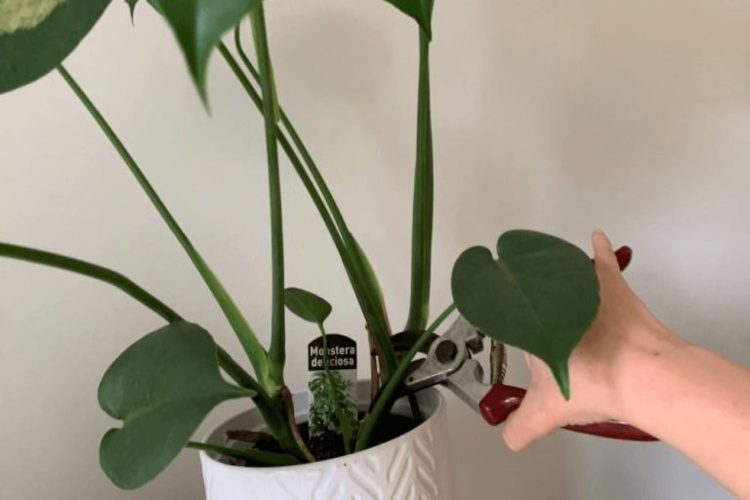Monstera Temperature: Requirements For Healthy Growth

Because Monsteras, or Swiss Cheese plants, are indigenous to tropical rainforests, they require constant warmth all year long. As a result, the weather that is suitable for this plant has a significant impact on its performance. Because of this, it’s crucial to understand the specifics of the conditions and needs of the Monstera plant.
Ideal temperature range for Monstera
Monstera can thrive in the temperature range between 60 and 80 degrees Fahrenheit. It can only thrive in conditions that most closely resemble its natural habitat. An additional issue that should be considered is the requirement that you keep Monstera away from places with drastic temperature shifts. As a result of the frequent climate changes in these situations and the associated health risks to the plant, placing Monsteras next to entrances or vents of air conditioning is strongly discouraged.
Additionally, Monstera plants have many benefits, including their low-maintenance habitats. This makes them a great choice for homes and offices where air quality is a concern. You can put them in your office, which needs somewhat higher humidity levels than usual. Moisture levels of 60% or above are ideal for Monstera. However, they may withstand concentrations as low as 40%, but it is advisable to make sure they get access to those higher humidity levels on a regular basis.
How to know if Monstera is struggling with climate?
The optimum place for your Monstera Deliciosa is somewhere that can receive enough warmth and strong light without getting any natural daylight. The finest sunlight conditions are often found near east-facing windows. But you may put the Monstera somewhere else as long as it doesn’t face strong sunlight.
Too high temperature
Since hot indoor temperatures are uncomfortable for people as well, it is likely that your plant would be subjected to them. However, if a Monstera plant receives excessive direct sunlight, its leaves may become burned and develop brown and dry areas. Climate change can often survive outside from May through September; however, this period might change depending on your environment and weather. You must keep an eye on the weather and be ready to relocate the plant if the climate starts to change, since extremes in temperature, including both too much heat and too little cold, can harm the plant.
You may take the plant outside on nice spring, summer, and autumn days to receive some fresh air. However, make sure there won’t be any rapid temperature drops and that the temperature won’t go below 60 degrees while your Monstera is outdoors. Move the plant back inside as soon as you see the temperature beginning to drop to shield it from harm. Even though Monstera plants like warm climates, they can suffer serious harm from heating exceeding 100 degrees Fahrenheit. This is particularly true if the plant receives inadequate watering and sun protection. The plant should not be kept in conditions that are too high.
Too cold temperature
The cold air is unsuitable for Monstera since it is sensitive to low temperatures. Some symptoms, such as protruding foliage, blackened or discoloured leaves, brown patches or other discolouration, wilting, and a loose root ball, may be visible. Monsteras struggle to stand up for the winter. In particular, you shouldn’t ever place this plant in an area where the temperature falls below or equals 55 degrees Fahrenheit. If you let your plant grow at temperatures below 55 °F, it may suffer serious harm or perhaps perish.
In fact, during the winter, you should limit your Monstera’s exposure to too much cold air. But you might be capable of growing the plant elsewhere if you reside somewhere with milder winters. The Monstera plant may grow in zones 10 and 11 of the USDA Plant Hardiness Zones. It must be cultivated indoors if you reside outside these zones. However, this does not preclude you from bringing the plant outside. In fact, on bright spring and summer days, gardeners frequently bring it outside.
How to fix climate-damaged Monstera?
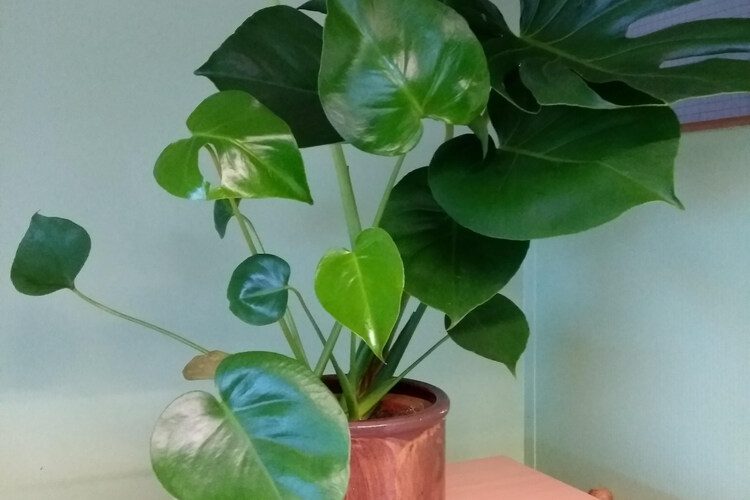
Monstera plants, which are native to tropical areas, require moderate temperatures and high humidity levels of between 60 and 80 percent. Indoors, 68 °F and 86 °F are the appropriate temperature ranges. However, they can still survive and continue to develop in conditions with somewhat lower temperatures and humidity levels of 40 to 50 percent, but you must absolutely not leave this plant in a climate below 50°F because it will kill the plant.
Stay away from hash condition
Be careful not to plant your Monstera where it will be exposed to drafts of too cold or hot, and dry air. Aside from preventing draughty windows and entrances, pay attention to the way your HVAC vents are blowing.
The favorite place for an indoor Monstera
Monstera indoor plants are susceptible to lethargy and disease if they receive insufficient light, and they are also susceptible to scorching if they are exposed to too much direct sunlight. The plant should be grown in a spot that receives around two and a half hours each day of moderate, filtered, or indirect sunlight, so try to avoid direct sunlight. Place it close to windows with a sunny or southeastern exposure or in front of a window with a sheer curtain. It is important to note that Monstera plants are toxic to cats. If you have this pet, please be careful to separate them in different rooms for safety purposes.
How to keep the condition fine for Monstera Deliciosa?
Winter plant care for Monsteras
Your climate will also affect how you care for your Monstera Deliciosa throughout the winter. Due to the lower general temperature, winter in some places can cause increased indoor humidity. The reason that air’s humidity rises is that it stores fewer water molecules as its temperature drops.
What should you do?
Pay attention to making sure your Monstera gets enough indirect light, even during the shorter winter days. Also, move your Monstera tropical plant to keep it from being exposed to chilly air from draughty windows and doors. If your plant is placed too close to a hot air vent, it may also be in danger of drying out.
Spring and summer care for Monstera Deliciosa plants
Your climate will determine what changes to the environment Monstera plants require over the spring and summer. The general temperature in these two seasons can monitor the humidity levels in your house. They might get high at this time of year if you reside in a humid region. The humidity might also quickly go too low during the hot months if you reside in a dry climate because the temperature is too high, especially in the summer.
What should you do?
Protect your Monstera from the dry, chilly air that comes through air conditioner vents during the summer. To avoid burning during the months when the sun is strongest, keep an eye on how much direct sunlight it receives because they prefer indirect sunlight or bright indirect light. If your Monstera plant requires repotting, now is the time to do it. In these cases, well-draining soil is needed for growing plants outdoors.
In addition, you also need to adjust the watering regime for plants in the hot season. The plant may need more water than usual. However, be careful to avoid overwatering, which causes root rot.
FAQs



